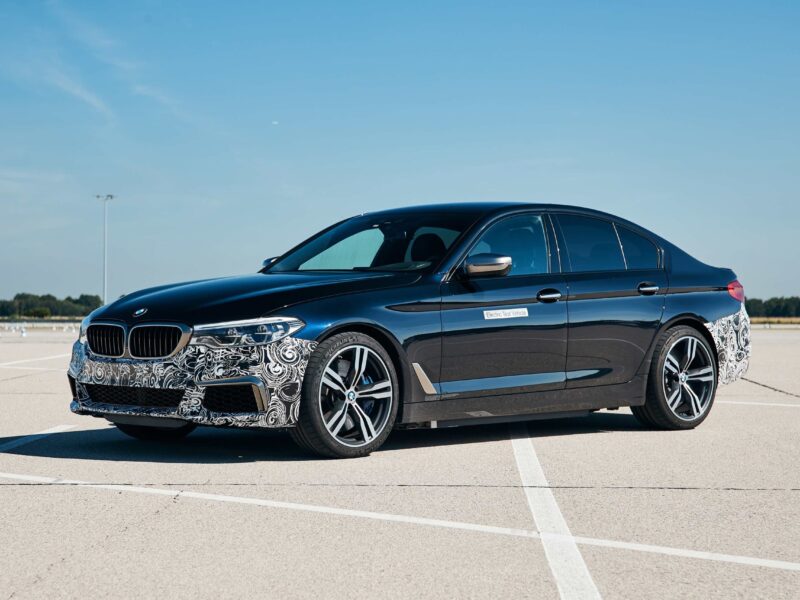
BMW test car explores the limits of electric drives
The BMW test car has three electric motors of the fifth generation and a system output of 530 kW (720 HP). Driven in this way, it can accelerate from 0 to 100 kmph in less than 3 seconds. However, the developers did not only want to implement the most impressive longitudinal dynamics possible, but also the same transverse dynamics – in other words, it should take curves about as fast as a fighter plane.
From the designers’ point of view, the decisive factor is therefore the fact that the two electric motors on the rear axle can be controlled separately. In this way, torque vectoring can be achieved in which as much drive power as possible can be converted into propulsion, even during highly dynamic driving manoeuvres. The electronic control for torque vectoring is more sensitive and at the same time more effective than a mechanical limited slip differential, the designers say. The reason: While a limited-slip differential always only reacts to a speed difference at the drive wheels, electronic torque vectoring enables actively targeted interventions in any driving situation.
The powertrain in Power BEV is made up of three drive units of the fifth generation, each of which houses an electric machine with the associated power electronics and the output in a common housing. One is installed on the front axle, two on the rear axle, designed as a double drive unit. In addition to the performance, it is remarkable that this generation manages completely without rare earth materials.
The BMW test car is based on a current production vehicle from the 5 Series. The integration of such a drive into a production vehicle is considered an essential engineering achievement. Thus, the entire passenger compartment of this vehicle was completely preserved without any restrictions. This makes it easier to assess the drive concept in comparison with others. The engineers were thus able to better analyse the possibilities offered by two separately controllable e-machines with E-Torque vectoring on the rear axle. This makes it possible to select the appropriate technology for future series vehicle projects. Thus, it will also be possible in the future to provide the customer with the appropriate technology in the respective vehicle concept.
Related articles:
Vehicle uses torque vectoring for extreme versatile steering
Automatic transmission builds bridge to electromobility for BMW
Porsche gets serious with electric cars
Schaeffler transfers Formula E technology to near-series drive concept
 If you enjoyed this article, you will like the following ones: don't miss them by subscribing to :
eeNews on Google News
If you enjoyed this article, you will like the following ones: don't miss them by subscribing to :
eeNews on Google News




